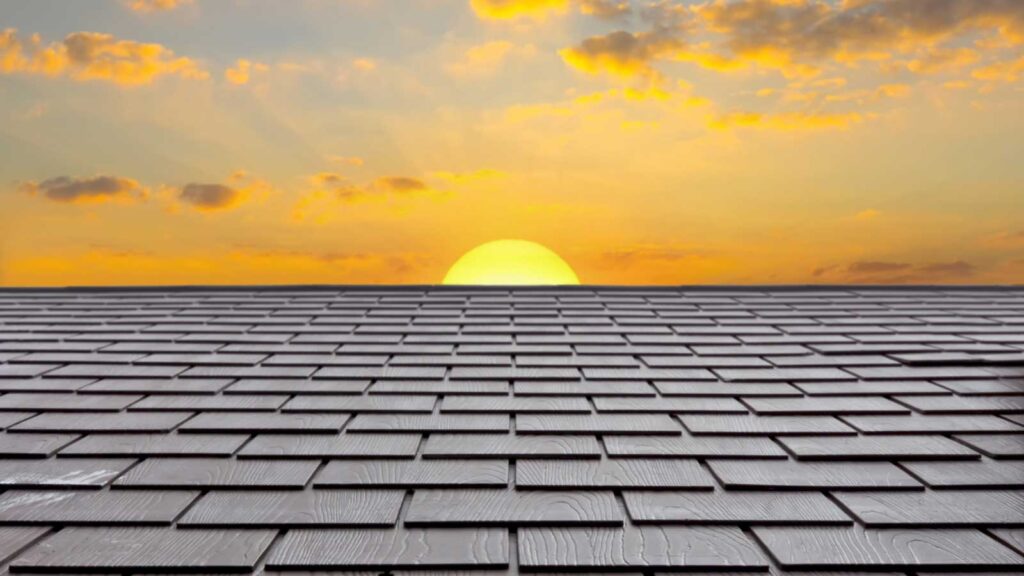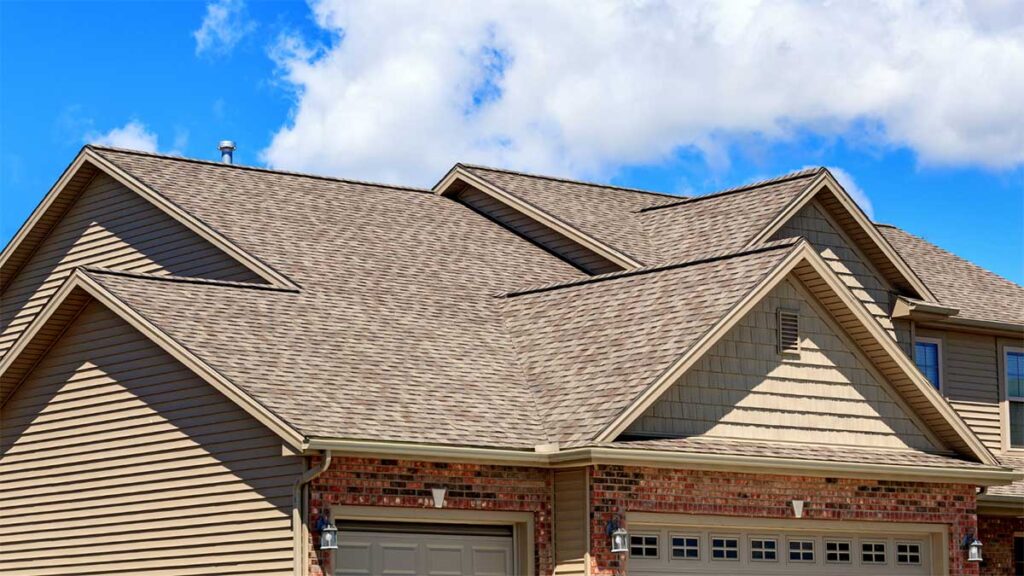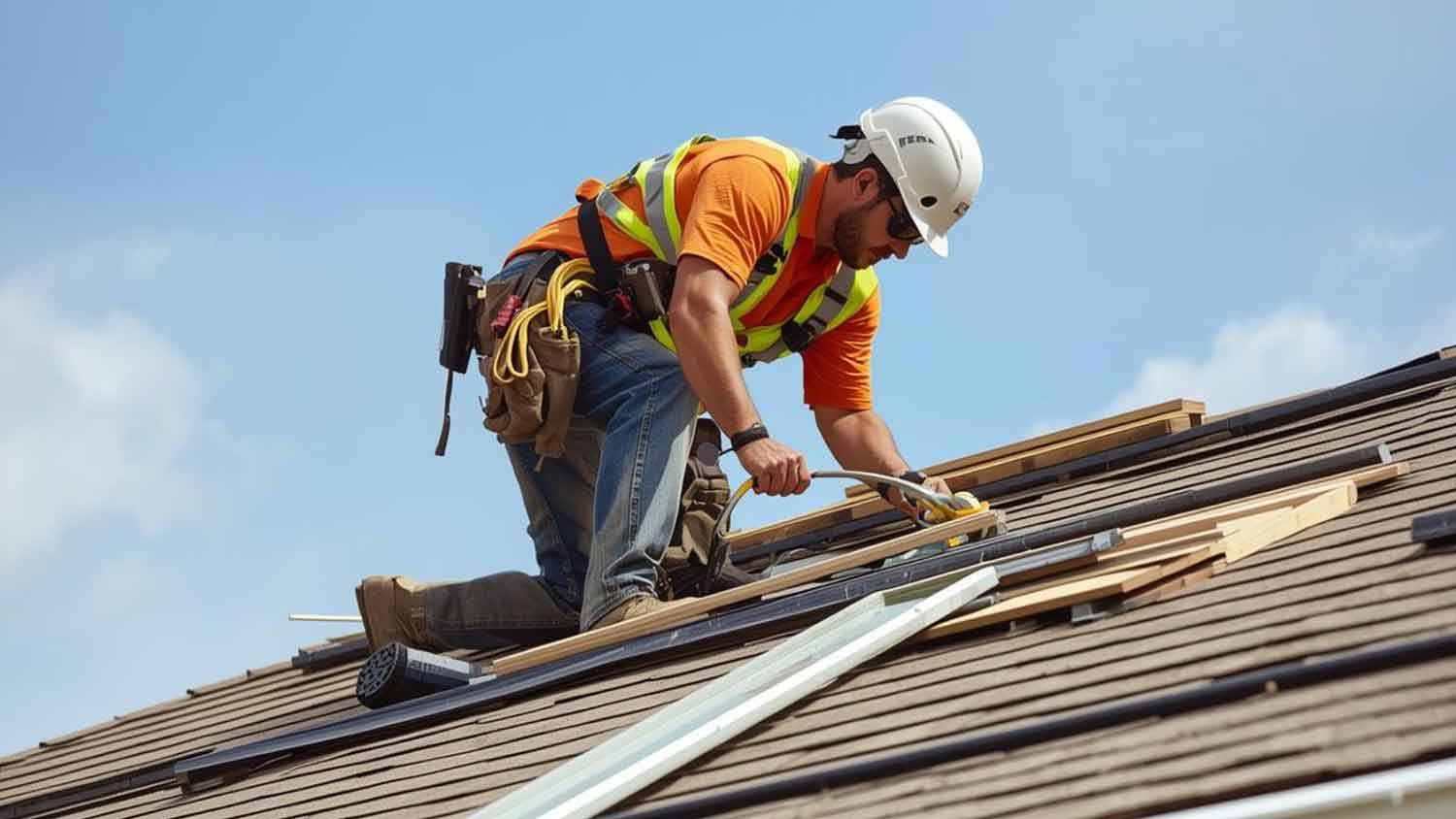High summer temperatures can put your roof under more strain than you might realize. You may notice higher cooling bills, rooms that are warmer than usual, or shingles that look worn. These signs often point to the impact of prolonged heat on your roofing system.
A roof takes the full force of the season’s sun and heat every day. Over time, this can lead to material stress, weakened components, and reduced lifespan. Without the proper maintenance and preventive steps, the damage can progress quietly until repairs become unavoidable.
In this guide, we’ll explain how summer heat damages your roof and the five ways you can combat it. If you’re already seeing signs of trouble, you’ll also learn that partnering with a reliable roofing contractor can help address the problem before it gets worse.
What Is Summer Heat and Why Does It Pose a Threat to Your Roofing System
Summer heat refers to the combination of high temperatures, direct sunlight, and increased ultraviolet (UV) radiation that occurs during the warmer months. While it feels intense on your skin, it’s even harsher on roofing materials that are exposed all day. The heat absorbed by the roof surface radiates inward, affecting both the structure and the interior comfort of the home.
Key characteristics of summer heat include:
- High ambient temperatures that push roofing materials beyond normal thermal ranges
- Prolonged daylight hours increase total daily heat exposure
- Intense UV radiation that breaks down protective coatings and surface finishes
- Humidity fluctuations that affect material stability and performance
- Large temperature swings between day and night cause expansion and contraction
These conditions create an environment where roofing systems are constantly tested. Even well-built roofs experience gradual wear when exposed to this climate cycle year after year. Heat-related stress often begins subtly, making it difficult to detect without professional inspection.
Addressing the risks early can save on major repairs later.
How Summer Heat Damages Your Roof in Multiple Devastating Ways
The summer sun impacts a roof in more ways than most homeowners realize. Heat, UV rays, and poor ventilation combine to create long-term wear that shortens a roof’s lifespan.
Knowing how each factor works is key to protecting your investment, so let’s break down the most common types of heat-related roof damage.
Thermal Expansion and Contraction Causing Material Stress and Cracking
Roofing materials naturally expand when heated and contract as they cool. In summer, these daily temperature swings can be extreme. Over time, the constant movement weakens fasteners, loosens flashing, and creates gaps where water can enter.
Shingles may lift or curl at the edges, while metal panels can warp out of alignment. Even small shifts can compromise the roof’s ability to shed water effectively. Without timely repairs, what starts as minor stress damage can lead to leaks and structural problems.
UV Radiation Breaking Down Shingles and Protective Coatings
Prolonged exposure to UV rays dries out the oils in asphalt shingles, making them brittle and prone to cracking. This damage can also fade the color of the roof and break down protective coatings on shingles, tiles, or metal panels.
When UV degradation is severe, homeowners may need to consider repairs or even file insurance claims for roof damage. This is especially true if the roof’s protective surface layer has worn away, leaving the material beneath vulnerable to moisture.
Extreme Attic Heat Buildup Weakening Structural Components
A poorly ventilated attic can trap hot air, pushing temperatures well above 140°F during peak summer days. This heat radiates downward into the living space and upward into the roofing materials.
Over time, this environment dries out wood components like rafters and decking, reducing their strength. It also accelerates the aging of shingles from beneath, compounding the damage from direct sunlight above.
Accelerated Aging and Granule Loss from Prolonged Heat Exposure
Granules on asphalt shingles serve as a critical UV barrier. Prolonged summer heat can loosen these granules, causing them to wash away during rainstorms. Without this protective layer, the asphalt underneath deteriorates faster.
Shingles that lose granules become more brittle and prone to curling or cracking. This accelerates the aging process, potentially reducing the roof’s expected service life by years.
Five Proven Ways to Protect Your Roof from Summer Heat Damage
Heat damage can be reduced or even prevented with proactive measures. By addressing ventilation, coatings, inspections, and material choices, homeowners can maintain their roof’s condition through the hottest months.
Let’s go through five effective strategies in detail.
Install Proper Attic Ventilation to Reduce Heat Buildup
Good attic ventilation allows hot air to escape and cooler air to flow in. This keeps temperatures balanced and prevents excess stress on roofing materials. Without proper airflow, trapped heat can damage shingles from underneath and increase indoor cooling costs.
Installing ridge vents along the peak of the roof paired with soffit vents under the eaves creates a natural circulation path. In homes with persistent attic heat, powered exhaust fans or solar-powered attic fans can help move air more efficiently.
A balanced ventilation system not only extends the life of your roof but also improves energy efficiency, lowers strain on your HVAC system, and keeps indoor spaces more comfortable during extreme summer heat.
Apply Heat-Reflective Coatings and Cool Roof Technologies
Reflective coatings work by bouncing a significant portion of sunlight away from the roof surface, reducing surface temperatures by several degrees. This helps slow down the effects of thermal expansion and minimizes UV damage.
Cool roof technologies include reflective asphalt shingles, coated metal panels, and white or light-colored membranes for flat roofs. These options are designed to meet high solar reflectance and thermal emittance standards.
For best results, coatings should be applied by experienced professionals who can prepare the surface correctly, ensure proper adhesion, and use the right thickness for maximum durability.
Implement Strategic Maintenance and Regular Roof Inspections
Routine maintenance ensures that minor problems are caught before they lead to costly repairs. This includes checking for lifted shingles, cracked tiles, worn flashing, or damaged sealants. Neglecting these issues allows heat-related wear to worsen over time.
Scheduling a comprehensive roof inspection before and after summer helps identify both visible and hidden damage. A professional roofer can spot subtle signs of deterioration that might not be obvious from the ground.
By keeping maintenance consistent, you extend the overall lifespan of the roof, reduce the risk of leaks, and maintain your home’s curb appeal even after harsh summer conditions.
Use Shade Solutions and Landscaping for Natural Cooling
Trees, pergolas, and shade sails can reduce the amount of direct sunlight hitting your roof. This natural cooling effect lowers roof surface temperatures and decreases heat stress on materials.
When using trees, place them far enough from the house to avoid branch damage or excess debris on the roof. Deciduous trees are ideal because they provide summer shade but allow sunlight through in the winter.
Pairing shade solutions with proper roof ventilation ensures your roof stays cooler without compromising airflow or creating moisture issues.
Choose Heat-Resistant Roofing Materials During Replacement
When it’s time for a roof replacement, consider materials designed to withstand prolonged exposure to high temperatures. Light-colored shingles, clay or concrete tiles, and coated metal roofing are excellent options in hot climates.
These materials perform better under thermal stress, maintain their appearance longer, and help improve your home’s overall energy efficiency. Some products also qualify for energy-saving incentives or rebates.
Consulting with a roofing expert ensures you choose the right combination of materials, underlayment, and ventilation for optimal summer heat protection.
Key Summary
Summer heat affects a roof in ways that are often overlooked. Prolonged exposure to high temperatures, UV rays, and poor ventilation gradually wears down materials and shortens the roof’s service life. Taking a proactive approach can make the difference between a few minor repairs and the need for a costly replacement.
Protecting a roof from heat damage involves more than one solution. Combining ventilation improvements, reflective coatings, regular maintenance, shading strategies, and the right material choices ensures better performance and longevity. Each measure works together to reduce heat stress and preserve the roof’s structural integrity.
Working with a trusted general contractor gives homeowners access to expert assessments and effective solutions tailored to their specific property. Professional insight ensures that repairs and upgrades are done right the first time, saving time, money, and stress in the long run.





